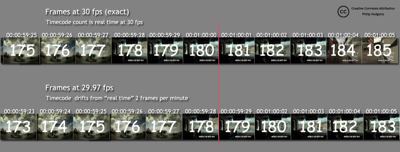Although I attend a number of conferences a year – often as a speaker – I mostly find that they go over ground that I either already know, or have heard the panelists/speakers go over before. In fact in 2008 there was one conference that I found extremely valuable – The Conversation organized in part by Scott Kirsner, who’s CinemaTech blog should be on everyone’s reading list.
So, naturally when Scott teamed with Peter Broderick on the Distribution U conference I signed up immediately. The conferences, held last Saturday, Nov 7, was a one day overview and summary of what people are doing to promote their independent films. While my primary interest is in the (as yet undeveloped) field of “independent television”, there were a lot of lessons from Distribution U (link is to Scott’s wrap up).
For me, the concentrated day helped me consolidate a lot of the thinking I’ve been doing on distribution over the last 3 or so years and helps me build on some of the thoughts I’ve been sharing via the (free) Supermeet 2009 magazine (How to grow an audience for your independent project) and via sessions at Digital Video Expo and other places.
Trying to summarize my eight pages of notes (a new conference record for me).
Scott Kirsner’s “scene setting” session started by pointing out how all technology innovation is immediately rejected by “the established players” – Edison hated projected film because he feared (accurately) that it would kill his profitable Kinescope business. We still see this happening today. His primary point is that “participation and engagement” with audiences is a crucial tenet of modern audience building – a term I prefer over “distribution”.
Another primary theme, from both Scott and Peter, is that the distribution for every project will be different, because the primary (or starting) audience will be different and what attracts one audience will not attract another. In modern distribution the “primary” audience for any project is one that is already engaged, in some way, by the topic or content. That helps get word-of-mouth buzz going and the audience can spread. Targeting a specific audience is easier (and cheaper) than trying to build a generic audience.
Another primary theme is that revenue comes from all sorts of places, not just “traditional” ones. A revenue mix seems to be the new normal for independent projects.
For example, the audience (and revenue) for Brian Terwilliger’s One Six Right has come from pilots, because the film is really about the romance of flying small planes and should appeal to every pilot in America. One Six Right has made money: (corrected after comment from Scott Kirsner)
- selling DVDs directly (9,000 in the first 9 days it was available);
- selling the soundtrack on CD (30% who buy the DVD also buy the CD of music unknown other than in the documentary);
- selling posters signed by the 24 year old filmmaker (so far $30,000 from sale of posters)
- listing (and selling) the DVD and merchandise through a catalog for pilots (Sporties);
- selling through Amazon (where apparently the tip is to keep supply to Amazon low, which keeps them from deep discounts and keeps the sale price high);
- selling a calendar (people pay to have the project’s promotion on their walls);
- deals with local general aviation airports for local premiere’s;
- giving the show to public television while retaining 4 x 15 second spots before and after the show to promote the DVD and merchandise;
- creating a half hour “making of” special that builds the documentary out to a 2 hour or 90 minute package and selling that to Discovery channel. This sale apparently covered the original budget, on top of all the income from all the other revenue-generating activities, which is substantial.
I don’t know the budget for 161 right but some quick math shows that the initial DVD sales and calendar sales account for about $210,000 in revenue alone.
In fact, engagement with the audience starts at the very beginning of the project, rather than after production is complete: build an audience as you build the project and neither is more important than the other. Starting early builds an audience for the project and it builds anticipation.
Peter Broderick focused on “Hybrid Distribution” – don’t throw out all the “old” methods but adapt them and slice up the rights to the filmmaker’s best advantage. Never give anyone more rights than they need, and always retain direct sale rights for DVD and digital downloads. Although Peter gave a lot more examples at the seminar, his 10 Principles of Hybrid Distribution article provides an excellent overview.
I really appreciated the depth of examples that Scott and Peter provided, and the willingness to “talk numbers”. In most cases we got specific examples of the revenue from each type of activity surrounding the production.
Scott Kirsner will be speaking on “Building Big Audiences and Generating Revenue in the Digital Age” in San Francisco on Tuesday Dec 1 and I recommend you go if you have any interest in the subject – it’s based on his book Fans, Friends, and Followers (my copy is on the way and I’m looking forward to reading it).
I think this quote from Lisa Seward of Mod Communications summarizes the changes best:
You used to use your budget to buy an audience. Now you have to invent ideas to attract an audience.
The quote comes from an excellent presentation, referenced by myself and Larry Jordan already, The Audience is always right.
